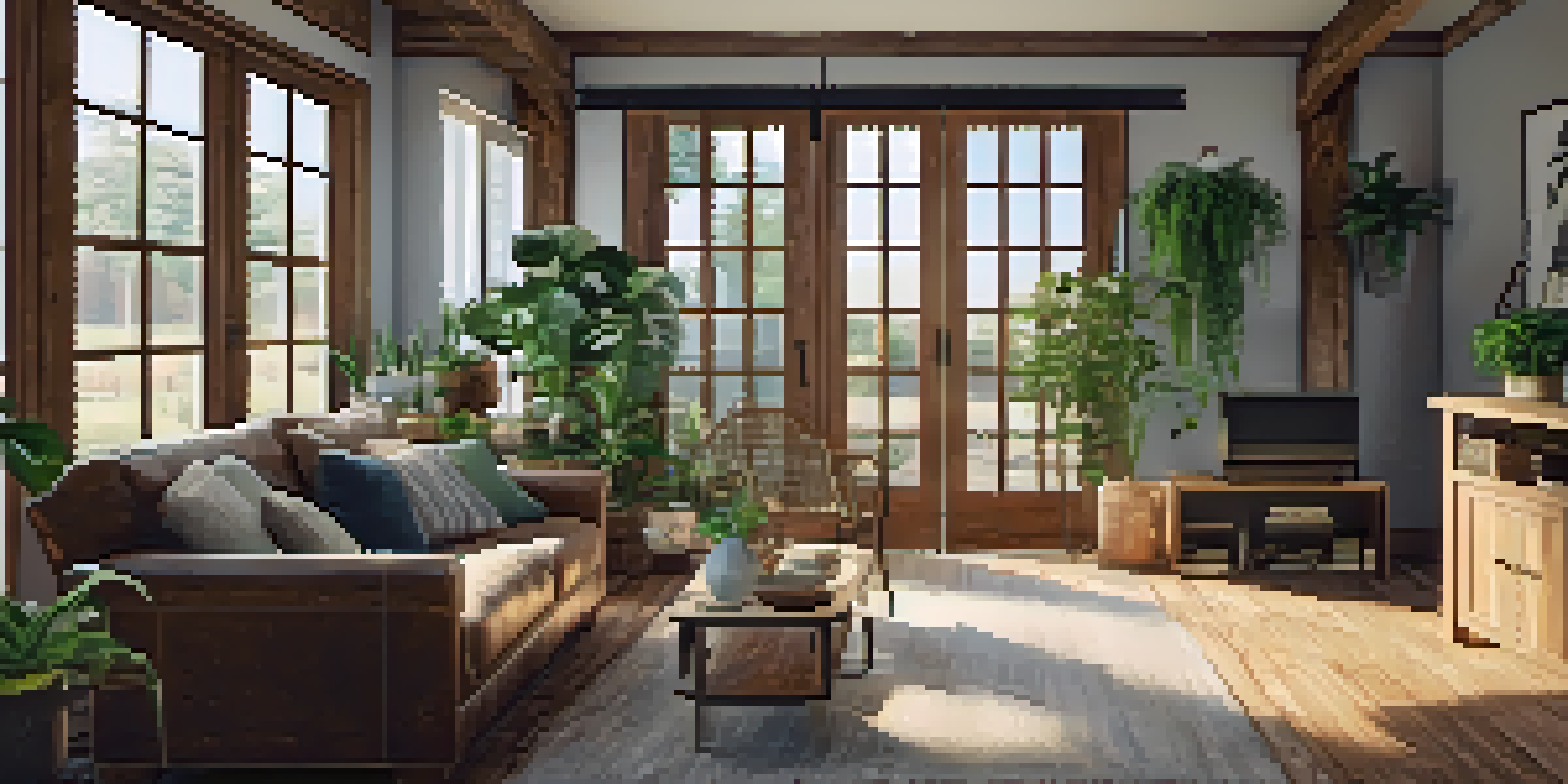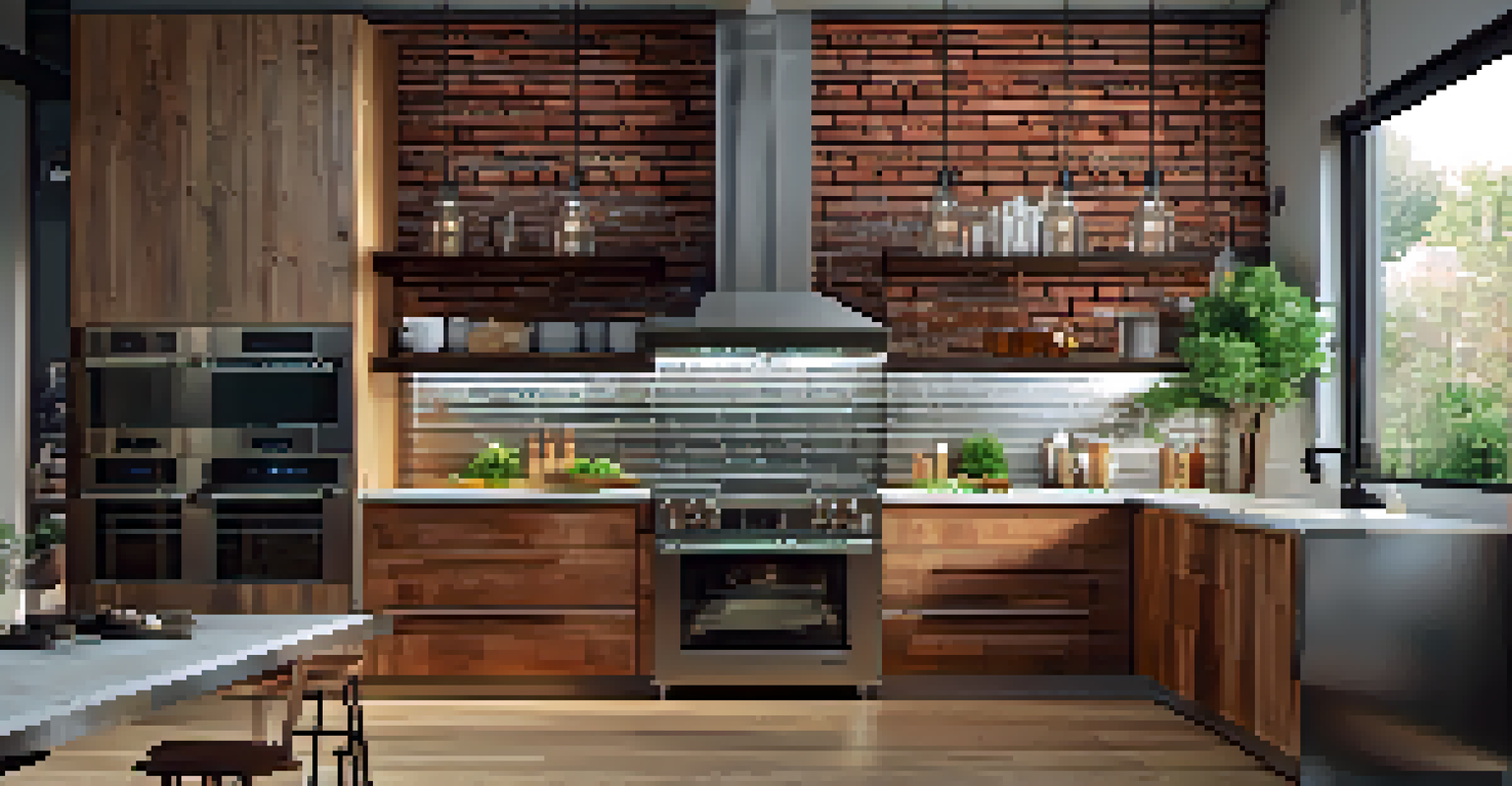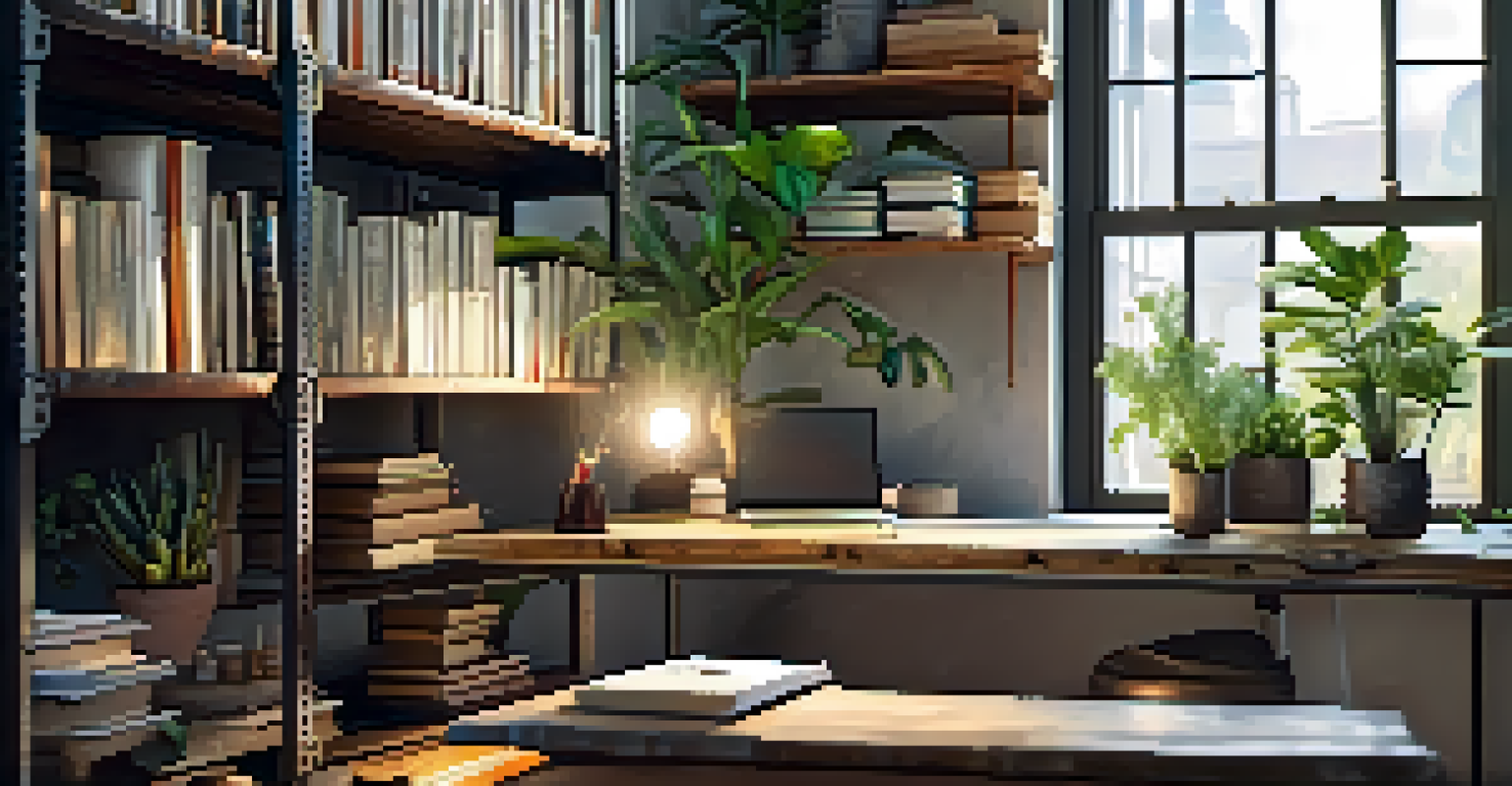Using Reclaimed Materials in Home Renovations

Understanding Reclaimed Materials and Their Benefits
Reclaimed materials are salvaged from old structures and repurposed for new projects. This approach not only reduces waste but also adds character to your home. Using reclaimed wood, bricks, or metals can give your space a unique charm that new materials often lack.
Reclaimed materials are not just a trend; they are a sustainable choice that tells a story and preserves history.
One of the biggest advantages of using reclaimed materials is their environmental benefits. By choosing these materials, you contribute to reducing landfill waste and conserve natural resources. This sustainable choice resonates with eco-conscious homeowners looking to make a positive impact.
Additionally, reclaimed materials often come with a history and story, making your home feel more personal. Imagine the tales a weathered barn door or a vintage wooden beam could tell! Incorporating these items can spark conversations and create a warm, inviting atmosphere.
Finding Quality Reclaimed Materials for Your Project
Searching for reclaimed materials can be an adventure in itself. Many homeowners find hidden gems at salvage yards, antique shops, or online marketplaces specializing in reclaimed goods. It’s like treasure hunting, where you never know what unique items you'll discover.

When selecting reclaimed materials, it's essential to ensure their quality and safety. Look for reputable suppliers who can provide information about the source and any necessary treatment the materials have undergone. This helps ensure that your renovations are not only beautiful but also safe.
Benefits of Reclaimed Materials
Using reclaimed materials reduces waste and adds unique character to your home.
Don’t hesitate to ask questions when purchasing these materials. Knowing the history, such as where the wood came from or how long it has been salvaged, can help you make informed decisions. Plus, the more you know, the more connected you’ll feel to the materials you choose.
Creative Ideas for Incorporating Reclaimed Materials
There are countless ways to incorporate reclaimed materials into your home renovations. For instance, using reclaimed wood for flooring or accent walls can instantly warm up a space and add texture. It can also create a stunning focal point that draws the eye.
Every piece of reclaimed wood has a past, and when you incorporate it into your home, you bring a piece of history into your life.
Another creative avenue is to use reclaimed bricks in a fireplace or as a backsplash in your kitchen. This not only adds rustic charm but also provides a durable surface that's easy to clean. The unique colors and textures of reclaimed bricks can enhance the overall aesthetic of your home.
Don't forget about smaller items, like reclaimed furniture or decor pieces. A vintage table or a set of chairs can serve as statement pieces in your home, showcasing your commitment to sustainability while adding to your design. These details can tie your entire renovation together.
Challenges of Using Reclaimed Materials
While there are many benefits to using reclaimed materials, there can be challenges as well. One common issue is finding materials that are in good condition and suitable for your specific project. It's essential to thoroughly inspect items to ensure they meet your needs.
Additionally, reclaimed materials may require more time and effort to prepare for use. Often, they need to be cleaned, treated, or even repaired before installation. This can be a labor-intensive process, but the result is often worth the extra effort.
Sourcing Quality Reclaimed Items
Finding reliable suppliers is crucial for ensuring the quality and safety of reclaimed materials.
Lastly, sourcing reclaimed materials can sometimes be more expensive than traditional materials. However, when you consider the environmental benefits and unique aesthetic appeal, many homeowners find it to be a worthy investment.
Inspiration: Successful Renovations Using Reclaimed Materials
Looking for inspiration? Many homeowners have successfully transformed their spaces using reclaimed materials. For example, a couple turned an old barn into a stunning home, incorporating reclaimed wood beams and vintage fixtures to preserve the original character.
Another inspiring case is a city loft that features a reclaimed wood accent wall and salvaged metal pipes used as shelving. This bold design choice not only gives the space an industrial feel but also tells a story of sustainability and creativity.
These examples show that reclaimed materials can suit various styles, from rustic to modern. The versatility of these materials means you can achieve a look that's uniquely yours while making a positive impact on the environment.
Maintaining Reclaimed Materials in Your Home
Once you've incorporated reclaimed materials into your home, it's important to know how to maintain them. Regular cleaning is essential to keep them looking their best and to prevent deterioration. For wood, using a gentle cleaner and avoiding excessive moisture is key.
Additionally, applying protective finishes can help extend the life of your reclaimed materials. This is particularly important for items exposed to moisture or wear, such as reclaimed countertops or flooring. Consult with a professional to find the best products for your specific materials.
Maintaining Reclaimed Materials
Proper cleaning and protective finishes are essential to preserve the beauty and longevity of reclaimed items.
Lastly, keep an eye out for any signs of damage or wear over time. Addressing these issues early on can prevent further deterioration and preserve the beauty of your reclaimed materials for years to come.
The Future of Reclaimed Materials in Home Design
As sustainability becomes increasingly important in design, the use of reclaimed materials is expected to grow. Homeowners are becoming more aware of their environmental impact and are seeking out ways to make eco-friendly choices. This trend is not just a passing phase but a movement toward responsible renovation.
Architects and designers are also embracing reclaimed materials, integrating them into modern designs while showcasing their unique characteristics. This fusion of old and new creates a dynamic aesthetic that appeals to diverse tastes.

As more people recognize the value of reclaimed materials, we can anticipate innovative uses and new sources emerging in the market. This evolution will continue to inspire homeowners to think outside the box and create beautiful, sustainable spaces.